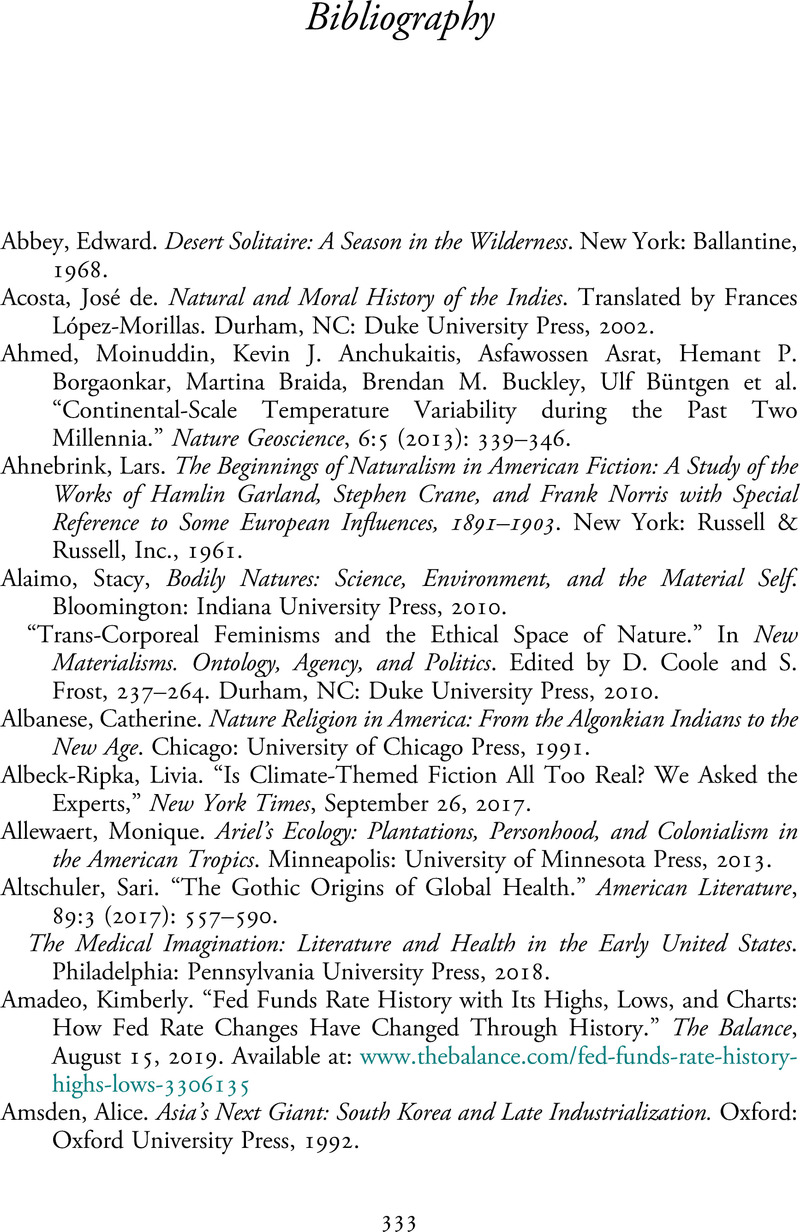Book contents
- Climate and American Literature
- Cambridge Themes in American Literature and Culture
- Climate and American Literature
- Copyright page
- Contents
- Figures
- Contributors
- Acknowledgments
- Introduction
- Part I Climate and Its Discontents
- Part II American Literary Climates
- Part III New Lines of Inquiry
- Bibliography
- Index
- References
Bibliography
Published online by Cambridge University Press: 18 February 2021
- Climate and American Literature
- Cambridge Themes in American Literature and Culture
- Climate and American Literature
- Copyright page
- Contents
- Figures
- Contributors
- Acknowledgments
- Introduction
- Part I Climate and Its Discontents
- Part II American Literary Climates
- Part III New Lines of Inquiry
- Bibliography
- Index
- References
Summary

- Type
- Chapter
- Information
- Climate and American Literature , pp. 333 - 366Publisher: Cambridge University PressPrint publication year: 2021



